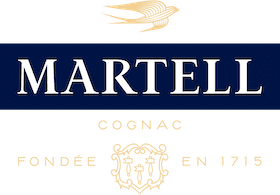
The World of Cognac
Bousinage
This strange word designates the toasting of the inside of the barrels by the cooper. This operation helps to develop the aromas of the wood, such as vanilla and toast, which are then absorbed by the eaux-de-vie. The intensity of the heat used influences the aromatic profile of the eaux-de-vie.


Ugni Blanc
Practically omnipresent in the vineyards of the Cognac region, this grape variety produces a lively white wine, which is the basis of the eaux-de-vie. The wine’s natural acidity helps to preserve it during the winter months, prior to distillation, while its low sugar content means it is low in alcohol but concentrated in aromas.


Foudre
It is in this extremely large barrel (with a capacity of 30 to 300 hectolitres), the equivalent of several casks, that eaux-de-vie are aged for several years, and sometimes decades. The oak helps the eaux-de-vie to develop into cognac.


Dame Jeanne
The Cellar Master decides to stop the age ing of an eau-de-vie when he judges that it has reached maturity. To do this, he transfers it into a glass or stoneware bottle (with a capacity of 20 to 50 litres) known as a “dame-jeanne” (demijohn). The eau-de-vie can be stored in this airtight container for several decades. It is thought that the origin of the name dates back to the 14th century and refers to Joanna I, Queen of Naples.


Mariage
Another term to designate the blending of eaux-de-vie into perfect harmony. For the Cellar Master, the art of blending consists of orchestrating a dialogue between terroir, distillation and blend.


La Part des Anges
When eaux-de-vie are aged in oak barrels, a portion of their volume evaporates into the air. This natural – and poetic – phenomenon is known as “the angel’s share”. The alcohol vapours nourish a microscopic fungus called torula compniacensis, which forms the distinctive black stain covering the stones and walls of the Cognac region. In bygone days, torula was a very useful way to detect the presence of an undeclared cognac cellar. The angel’s share represents a challenge for cognac houses, since every year 2% of the region’s production evaporates!


From Jersey to Cognac
Commercial Expansion
Cognac Craftmen
Please do not share with anyone under 21. Drink responsibly.









